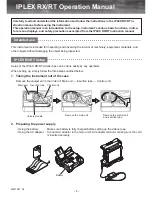
23
the hoses are not blistered, cut, or otherwise damaged. If hose protectors are present,
slide the protectors back to expose the hose fittings, and inspect the hoses as described
above.
2.
Visually inspect both the first and second stage regulators for any signs of external
damage.
3.
Environmentally sealed first stages only: Closely inspect the external sealing diaphragm
for any signs of damage or deterioration that may cause leakage. Check to ensure that
the retainer which holds the external diaphragm in place is tightly secured.
WARNING: If the external diaphragm shows any signs of damage or
neglect, DO NOT attempt to dive with the regulator until it has received
factory prescribed service from an authorized dealer. The regulator’s
performance may be compromised, and first stage freeze-up could occur
in cold water conditions.
4.
Connect the first stage regulator to a fully charged SCUBA cylinder. (For mounting
instructions, read the Preparation and Setup section on pages 6-10.)
SLOWLY
open
the cylinder valve to pressurize the regulator. Continue turning the valve
counterclockwise until it stops. This is to ensure that the valve is completely open.
5.
Turn the inhalation control knob completely “out” (counterclockwise), and then back “in”
(clockwise) until the regulator provides maximum ease of breathing with no leakage
present. Do not apply excessive pressure.
6.
With the Venturi pad lever set to PRE-DIVE, purge the regulator momentarily to blow out
any dust or debris which may have entered the second stage. Release the purge button
and listen to ensure that the second stage does not continue to flow any air after the
purge button is released.
7.
Inhale slowly and deeply from the regulator several times. The regulator must deliver
enough air for you to breathe easily without noticeable resistance.
8.
Check to ensure that the submersible pressure gauge is displaying an accurate
measurement of the air pressure inside the cylinder.
9.
Check to ensure that the Venturi pad lever is set to PRE-DIVE. Gently turn the inhalation
control knob completely “in” (clockwise), only until it clicks. Do not apply excessive
pressure. These settings will help to minimize any loss of your air supply during entry or
while making a long surface swim. Adjustments can be made below the surface.
Summary of Contents for Airstream Evoque Regulator
Page 17: ...17 MARKING EVS EN 250A 2014 Airstream Airstream for DIN...
Page 18: ...18 Airstream for YOKE Evoque Evoque...
Page 29: ...29...
Page 30: ...30 Notes...
Page 31: ...31 Notes...
Page 32: ...32 Notes...
Page 33: ...33 S E R I A L N O...











































